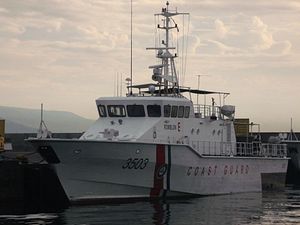Last week, the Philippine navy and coast guard carried out what was characterized as the first joint maritime exercise of its kind between them. The notable first spotlighted how the Philippines is continuing to manage its ongoing maritime coordination challenge under Philippine President Rodrigo Duterte amid wider domestic and regional developments.
As I have noted previously, the Philippines has long had a maritime challenge of being able to safeguard over 7,000 islands with a tenth of the world’s coastline with its limited military capabilities and manifold internal and external security challenges, including insurgency, piracy, terrorism, and ongoing disputes in the South China Sea. That has continued to be the case under Duterte with a mix of continuity and change with respect to defense policy more generally.
One of the aspects of this challenge has been promoting greater interagency collaboration in the maritime domain, including between the Philippine Navy (PN) and the Philippine Coast Guard (PCG). Not unlike other regional countries, the Philippine military has been looking to promote better coordination between its various services as it manages a range of security challenges and develops its capabilities.
Last week, this aspect of Philippine maritime security was in the spotlight again with the holding of what was characterized as the first-ever joint exercise of its kind between the PN and PCG. The exercise, known as Exercise PAGKAKAISA, was launched on November 20 at the Nonato Multi-Purpose Hall at Naval Base Cavite in Cavite City and was intended to harmonize the operations of both services in securing the country’s waters.
The Philippine Fleet public affairs office chief, Sahirul Taib, said according to the Philippine News Agency (PNA) that the first of its kind exercise was meant to strengthen collaboration to protect Philippine maritime space, including cooperative deployment in areas like the West Philippine Sea, Philippine Rise, Northern Luzon, and southern Mindanao; maritime law enforcement operation; search and rescue operation; shore-based and at-sea training, information exchanges, repair, and maintenance assistance. He also added that such engagements would help boost the camaraderie among personnel from both services as well.
Few details have been publicly disclosed thus far about the exact nature of the engagements during the exercise, which during the opening ceremony featured the presence of officials including Philippine Fleet commander Giovanni Carlo Bacordo. But as they surface and we see more of such engagements at work, it will be important to play close attention to how they play out as well as their broader significance for the Philippines as well as other countries around the wider region.

































